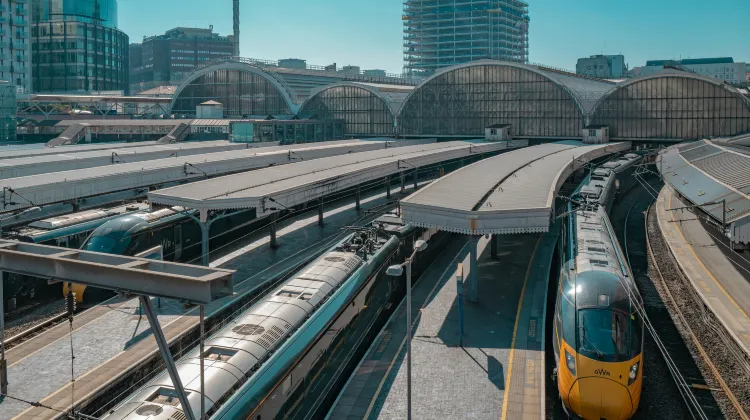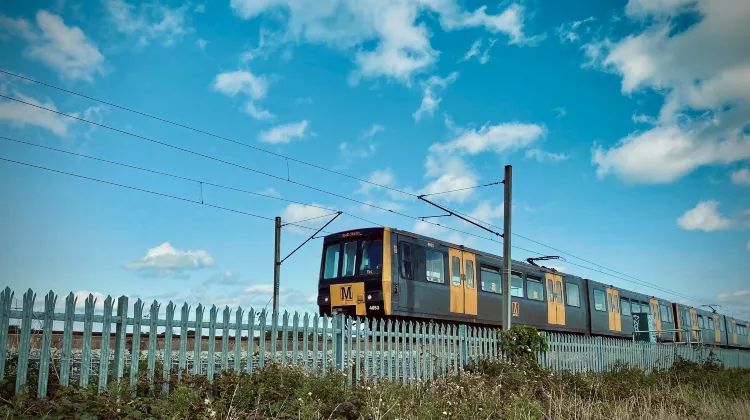Have you ever purchased a train ticket and seen the option for a split ticket (or split save train ticket)? What does that mean, exactly? And can it benefit you?
Split save train tickets are a great way of saving you money when travelling by rail if you don’t mind (a small amount of) extra work.
In this guide, we break down what a split Save train ticket is, how to use them effectively, and some of the factors to look out for.
What is a Split Save Train Ticket?
Split save tickets involve breaking down a journey into multiple segments and purchasing separate tickets for each leg of the trip. Although this may sound more expensive (two journeys should be more expensive than one, right?), in many cases this means a cheaper journey!
In many cases, and with correct planning, this will mean staying on the same train! So, you may not even have to move from your seat to gain the savings.
By strategically splitting your journey at specific stations, you can unlock hidden savings that may not be available with standard tickets. For example, dividing a long-distance journey into shorter segments can result in significant reductions in fare costs, allowing you to enjoy the same travel experience for less.

How do you split train tickets?
Looking for split ticketing opportunities involves breaking down your journey into multiple segments and purchasing separate tickets for each leg. Here’s a step-by-step guide of how to buy split tickets:
- Plan your journey: Determine your starting point and destination and the time in which you plan to travel.
- Identify ‘splitting points’: Now, research potential splitting points along your route where purchasing separate tickets may result in cheaper fares. These ‘splitting points’ are typically stations where trains stop or change services, which usually means they are more known than smaller stations. A good rule of thumb is to check out the more popular stations first.
- Check train timetables: Use online journey planning tools (such as ours right here) to identify the timings of when your train will pull into the ‘splitting point’. Ideally, you’ll be able to time this switchover so you can remain on the same train and not even move from your seat – however, availability of seats will be the deciding factor, here. You may be able to remain on the same train, but just simply move seats for this to work.
- Calculate costs: Next, you’ll want to compare the costs of both single tickets combined against the cost of the entire, unsegmented journey. Make sure to consider the impact any discount or Railcard may have on this.
- Purchase tickets: If you’ve identified a valid split ticket saving opportunity, purchase both tickets (and double check you’ve aligned the dates, seats and times properly). You may need to visit the ticket office at the station or use a self-service ticket machine.
- Travel: You’re all set! Ensure you have both tickets to hand when travelling and keep an eye out for when the ‘split’ occurs, so that you’ll have the correct ticket on-hand if a conductor or inspector comes to check.
What to consider when splitting tickets
Here are a few things to keep an eye on when you’re using split save train tickets:
- Transfer times: When splitting your journey, consider the transfer times between split points to ensure seamless connections between trains. In many cases, you won’t have to leave your train (if planned well), but in others you may have to, so allow sufficient time between trains to avoid missing connections, especially if you need to change platforms or stations. Research the timetable for connecting services and factor in any potential delays or disruptions that may affect your journey.
- Ticket validity: Be mindful of any ticket restrictions associated with split save tickets, such as limited validity or specific travel times. Some split tickets may only be valid for certain train services or travel periods, so ensure that your tickets are valid for the trains you intend to travel on. Check the terms and conditions of each ticket to avoid any issues during your journey.
- Seats: If you’ve managed to find a split opportunity that means you can stay on the same train for the whole journey using two tickets, always take note that this may still mean you have to change seats mid-journey. If so, keep an eye out for different stations on your journey so you know when to change.
- Discounts and Railcards: Explore available discounts and railcards that can further reduce the cost of your split save tickets. Railcards offer discounts for various demographics, including students, seniors, families, and disabled passengers. Research the eligibility criteria and benefits of different railcards to determine if you qualify for additional savings on your rail travel. You can find out more about railcards here.
- Fare calculations: Perhaps the most obvious thing to check – make sure that you’re actually saving money by splitting the ticket! If not, then it’ll be far more convenient to simply buy a direct ticket.

Examples of split save train journeys
London to Manchester
Instead of purchasing a direct ticket from London to Manchester, consider splitting the journey at intermediate stations such as Birmingham or Stoke-on-Trent. For example, this would mean buying separate tickets for the London to Birmingham leg and the Birmingham to Manchester leg. This may result in cheaper fares compared to a single direct ticket.
Edinburgh to Bristol
Consider splitting the journey at intermediate stations such as York or Birmingham. Purchase separate tickets for the Edinburgh to York leg and the York to Bristol leg, or the Edinburgh to Birmingham leg and the Birmingham to Bristol leg.
Glasgow to London
This journey could be potentially split at stations such as Carlisle or Preston. Consider buying separate tickets for the Glasgow to Carlisle leg and the Carlisle to London leg, or the Glasgow to Preston leg and the Preston to London leg.
Split Ticket FAQs
How do split tickets work?
Split tickets work by taking advantage of pricing discrepancies between different segments of a journey. Passengers can identify splitting points along their route where purchasing separate tickets for each segment is more cost-effective than buying a single through ticket. This allows passengers to save money on their rail travel.How do I find splitting points for my journey?
Splitting points can be identified by researching train timetables and route maps to determine where trains stop or change services along your journey. Look for intermediate stations where you can break your journey and purchase separate tickets for each segment. Online journey planning tools and ticketing websites may also provide information on splitting points.Are there any restrictions associated with split tickets?
While split tickets can offer significant cost savings, passengers should be aware of any restrictions associated with each ticket. These may include limitations on train services, travel times, or validity periods. Passengers should carefully read the terms and conditions of each ticket to ensure compliance with any restrictions.Are split tickets legal?
Yes, split ticketing is entirely legal and permitted by train operators in the UK. Passengers can save money by purchasing separate tickets for each segment of their journey, taking advantage of pricing variations between different parts of the route. However, it's essential to ensure that the tickets are valid for the intended journey and comply with the terms and conditions of travel.Can I use split tickets for any train journey?
Split tickets can be used for most train journeys within the UK, including both short and long-distance routes. However, availability and cost-effectiveness may vary depending on the specific route and train operator. Passengers should research and compare split ticket options for their journey to determine the best savings opportunities.
